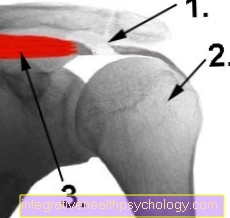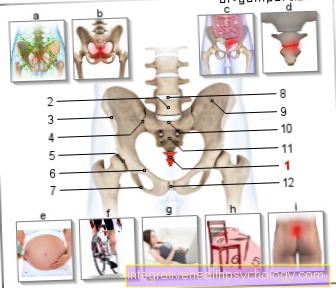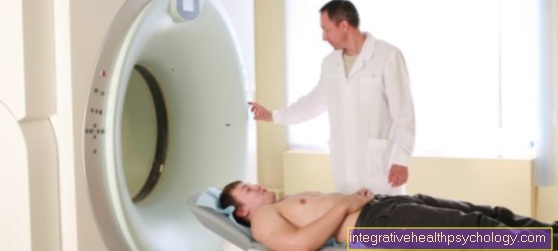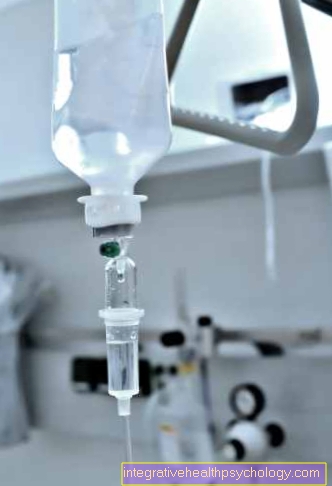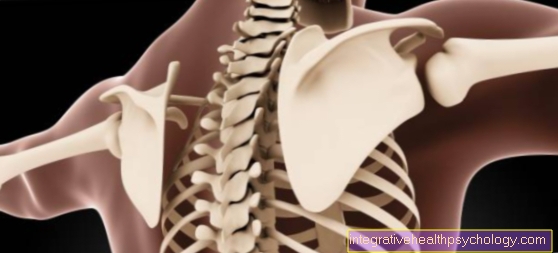What are the chances of survival if you have a cerebral hemorrhage?
introduction
A cerebral hemorrhage is not a uniform clinical picture.
One differentiates much more between:
- intracerebral and
- extracerebral bleeding.
1. Intracerebral hemorrhages are cerebral hemorrhages in the strict sense, as they take place in the brain tissue, whereas
2. Extracerebral bleeding occurs in the area of the meninges.
Colloquially, however, both types of bleeding are summarized under the term cerebral haemorrhage. However, since there are very different clinical pictures with different causes, the chances of survival are not the same. There are cerebral hemorrhages with a comparatively good prognosis and others that are associated with a high mortality rate. The following article looks at the different types of cerebral hemorrhage and the associated chances of survival. It also sheds light on interesting facts and information that affect the chances of survival in the event of a cerebral hemorrhage.

What are the general chances of survival?
Cerebral haemorrhages are serious clinical pictures that can sometimes be fatal.
Depending on the type of cerebral hemorrhage, there are different chances of survival. One example is the chronic subdural hematoma, which mostly affects older people after a minor trauma. After the injury, it bleeds into between the meninges over a course of weeks and months. As a result, symptoms such as headaches and ultimately paralysis and epileptic seizures develop more slowly. (see also: Symptoms of a cerebral hemorrhage)
An acute subdural hematoma, on the other hand, can be associated with a mortality of 30 to 80%, since it is usually an acute, major bleeding with accompanying brain injuries. So you can see that it is very difficult to speak of “general chances of survival”. Aside from the bleeding, other factors, such as age, the overall condition of the person, and how the bleeding started, also play an important role in survival.
For cerebral haemorrhage in the narrower sense, namely bleeding of the brain tissue (intracerebral), the general prognosis is rather poor. In the first 30 days after the bleeding 40% of the patients die and 1 year after the bleeding 50% of the patients have died.
Which factors positively influence the chances of survival?
There are various factors that can positively influence the chances of survival in the event of a cerebral haemorrhage.
This includes a good general condition of the person concerned. A good state of health is always an advantage and improves the chances of a cerebral haemorrhage of the subsequent therapies. (See: Therapy of a cerebral hemorrhage)
A relatively small bleeding and only slight accompanying injuries are also advantageous for survival, since severe accompanying injuries, for example in the context of a car accident, have a significant impact on survival.
Fast care in a specialized hospital is also important for positively influencing the chances of survival. The faster the therapy, the better the chances of survival for those affected. Furthermore, younger people have a better chance of survival from a cerebral haemorrhage than old people, who usually also have a generally poorer state of health.
Which factors negatively influence the chances of survival?
The development of the cerebral hemorrhage plays a decisive role in the chances of survival. A severe traumatic brain injury, for example in a car accident, is usually associated with very heavy bleeding and further injuries to the brain tissue.
Therefore, the chances of survival are usually to be rated as worse than they would be, for example, with less severe injuries. Concomitant illnesses or old age also have a negative effect on the chances of survival.
High blood pressure, in particular, is a major risk factor for intracerebral cerebral haemorrhage - that is, cerebral haemorrhage in the brain tissue - and worsens the prognosis if it is not controlled with medication. Drug use, especially amphetamines, cocaine or speed, is a risk factor for intracerebral cerebral haemorrhage and a negative factor that can worsen survival. Certain types of cerebral hemorrhage are associated with a poorer chance of survival due to the type of hemorrhage.
This includes:
- the subarachnoid hemorrhage
- Intracerebral bleeding and
- acute subdural bleeding.
What are the chances of survival if a coma occurs?
A coma is the highest degree of impaired consciousness in which the person concerned cannot be awakened even by pain stimuli.
In the course of a cerebral haemorrhage, a massive increase in intracranial pressure can lead to a coma. Attempts are made to prevent this by intervening at an early stage, as irreversible damage to the brain tissue or even death can result.
A coma therefore requires intensive medical care. The condition of those affected is to be viewed as critical and potentially life-threatening. Not only the cerebral hemorrhage as such threatens life in this condition, but also complications that can occur in intensive care treatment. These are mainly pneumonia and blood poisoning. Especially through ventilators, catheters and venous access, germs can get into the body of the person affected and lead to life-threatening infections. The chances of survival in the case of a cerebral haemorrhage with a coma are therefore worse on average than without a coma.
If those affected survive, they usually suffer from consequential damage. In the far rarer cases, those affected survive such a cerebral hemorrhage without any consequential damage.
What is the potential harm if you survive?
Depending on how badly the brain tissue was affected by the cerebral haemorrhage, the resulting damage can vary in severity.
Consequential damage is not necessarily present, but is very common, especially with intracerebral cerebral haemorrhages. Epileptic seizures can occur as complications and can persist.
Damage to important brain areas with the loss of certain skills, such as speaking or memory, is also possible. Paralysis and neuropsychological damage can also be the result. The latter can manifest itself in very different psychological deficits, such as a change in personality or depression.
Patients who have been lying in bed for a long time and have been ventilated during intensive medical treatment can also suffer from consequential damage. These are impairments of the lungs and the musculoskeletal system.













